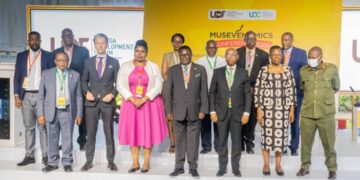At the Musevenomics Conference 2025 held at Mestil Hotel in Kampala, top Ugandan economists, policymakers, and dignitaries gathered to unpack Uganda’s economic transformation under President Yoweri Kaguta Museveni.
The high-level forum examined the ideology, policies, and real-life impacts of what is now widely referred to as #Musevenomics—a blend of pragmatism, market reforms, and visionary leadership that has shaped the country’s economy since 1986.
Delivering the keynote address, Dr Fred Muhumuza, Director of the Economic Forum at Makerere University Business School (MUBS), provided a sweeping historical reflection on Uganda’s economic trajectory, starting from the colonial era through post-independence instability to today’s liberalized economy.
“Privatization and liberalization were driven by economic principles guiding political decisions,” Dr Muhumuza stated. “These reforms reshaped access—there was a time you needed government approval just to get a crate of soda. Today, the market is open and accessible.”
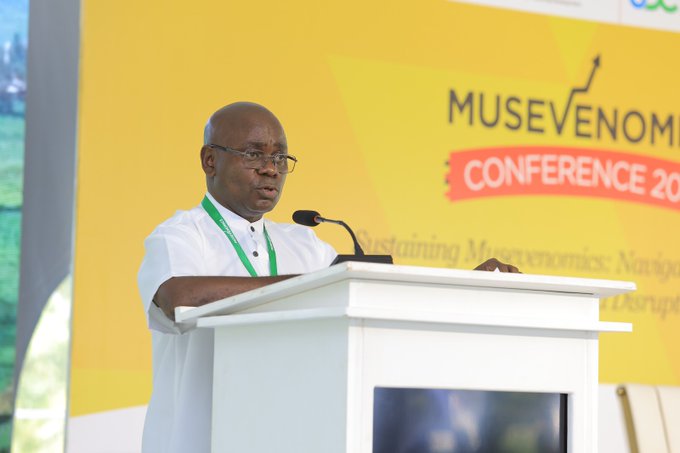
He outlined six questions guiding his research into Uganda’s economic transformation: “What was Uganda’s economy like in 1900? In 1962? What was the collapse between 1971-1986 like? What was it like in 1986? What is it like today? And what should it be like as a modern economy?”
One key challenge he identified was the persistent subsistence mindset. “Once I have something to eat, don’t tell me anything else,” he lamented, contrasting this with what he called the “desire of greed” that often fuels capitalist growth. “We still don’t know how to manage the land issue,” he added, flagging unresolved land tenure challenges as a bottleneck to wealth creation.
#Musevenomics, Dr Muhumuza explained, is an economic philosophy blending President Museveni’s political ideology with liberal economic strategies. “The President’s main influence is Adam Smith—The Wealth of Nations. The guiding question has always been: how do we create wealth?” he said.
Coffee Sector as a Case Study
Prof Ezra Suruma, former Minister of Finance and key architect of economic reforms in the 1990s, offered a compelling case study on Uganda’s coffee sector from 1964 to 2024.
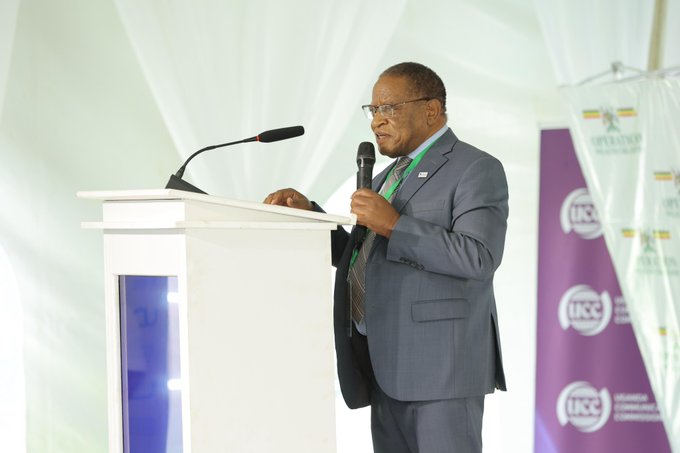
Recalling the hyperinflation of the 1970s and 1980s, he remarked, “You buy something today at 10,000 shillings, and by tomorrow it’s 20,000. Inflation was very, very disruptive—some cases over 300%.”
He attributed the turnaround to the liberalization of price and foreign exchange controls. “Before 1987, if you arrived at the airport with dollars, you had to declare and surrender them to the Central Bank within 48 hours, often at unfavourable rates. That reform was a fundamental change,” he recalled.
Suruma also highlighted a 2014 directive from President Museveni to boost coffee production to 20 million bags. “A year later, I found nobody had done anything about it. We created a coffee roadmap. That experience taught us the importance of target setting and involving the President in priority setting,” he said.
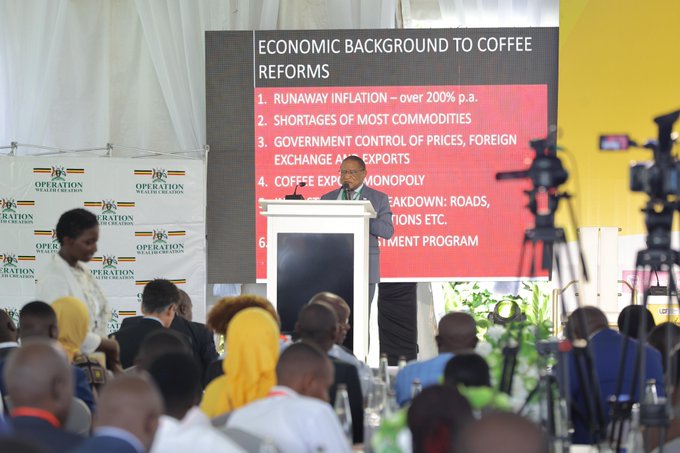
“The number of households producing coffee increased from 1.6 million in 1985 to 1.8 million in 2024,” Prof Suruma noted, attributing much of this growth to structured reforms and market liberalization.
Industrialisation and Value Addition
Dr Patrick Birungi, Executive Director of the Uganda Development Corporation (UDC), presented Musevenomics as anchored in building “an independent, integrated, and self-sustaining economy.”
He referenced the President’s post-COVID-19 economic framework on the “real economy versus the vulnerable economy,” where value addition was emphasized. “We must transform Uganda’s raw materials into high-quality products. This is where policies like adding value to coffee come in,” Dr Birungi noted.
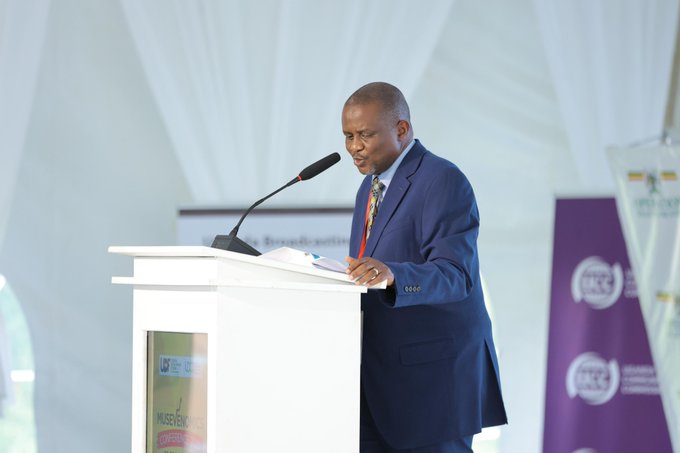
He also defended public sector investment in strategic areas, saying, “You cannot deal away with this model simply because. Look at Singapore’s Temasek and Malaysia’s Khazanah. UDC was re-established to do the same in Uganda.”
UDC’s investments, he said, include agro-manufacturing and infrastructure projects like the Kalangala ferry and local road construction, proving that targeted state intervention can yield a visible impact.
Macroeconomic Stability: The Big Picture
Prof Augustus Nuwagaba, Deputy Governor of the Bank of Uganda, provided a broader macroeconomic perspective. “Inflation has stabilized from over 160% in 1986–87 to 3.9% today. Our target is to hit and maintain 5%,” he noted.
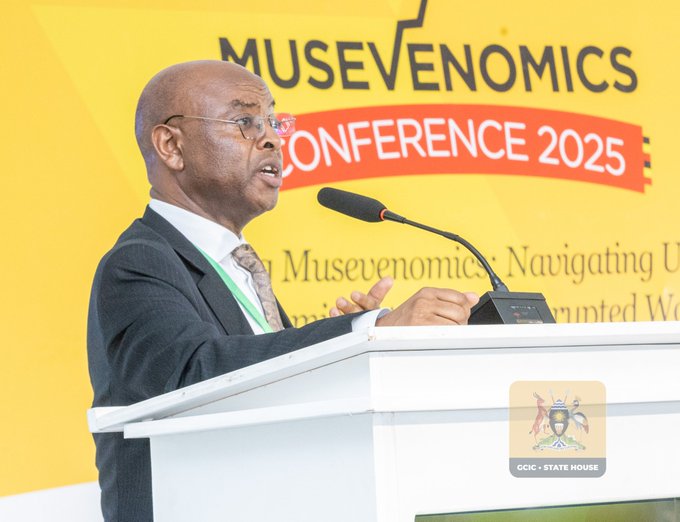
He emphasized Uganda’s improved global investment image. “In 1985, we recorded negative Foreign Direct Investment (FDI). Today, it stands at approximately $2.89 billion,” he said.
Nuwagaba added that Musevenomics has ensured coffee remains critical to the balance of payments, with value addition and international competitiveness at the centre of government strategy.
Voices of Consensus
The conference attracted various stakeholders including Justice and Constitutional Affairs Minister Norbert Mao, EU Ambassador Jan Sadek, the Vice Chairperson of the Private Sector Foundation Uganda (PSFU) Board, Sarah Kagingo, and others. The mood was one of cautious optimism.
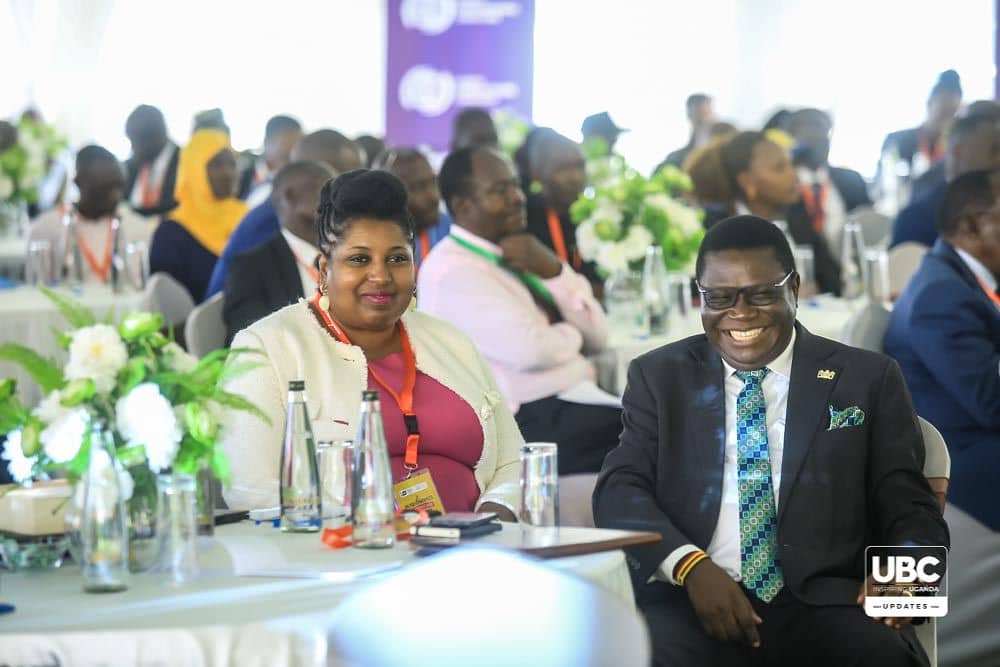
In his closing remarks, Dr. Muhumuza reiterated, “We must not romanticize the past. The reforms were hard but necessary. Today, our challenge is to move beyond access and focus on inclusion, equity, and sustainability.”
#Musevenomics2025 is more than a conference—it is a national reflection on how far Uganda has come, and what still must be done to build an inclusive, resilient, and productive economy.
